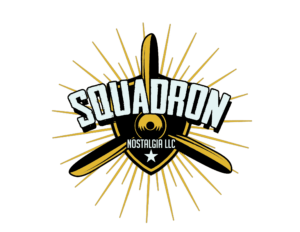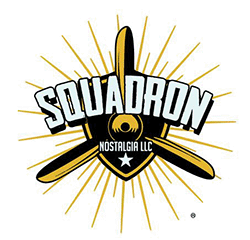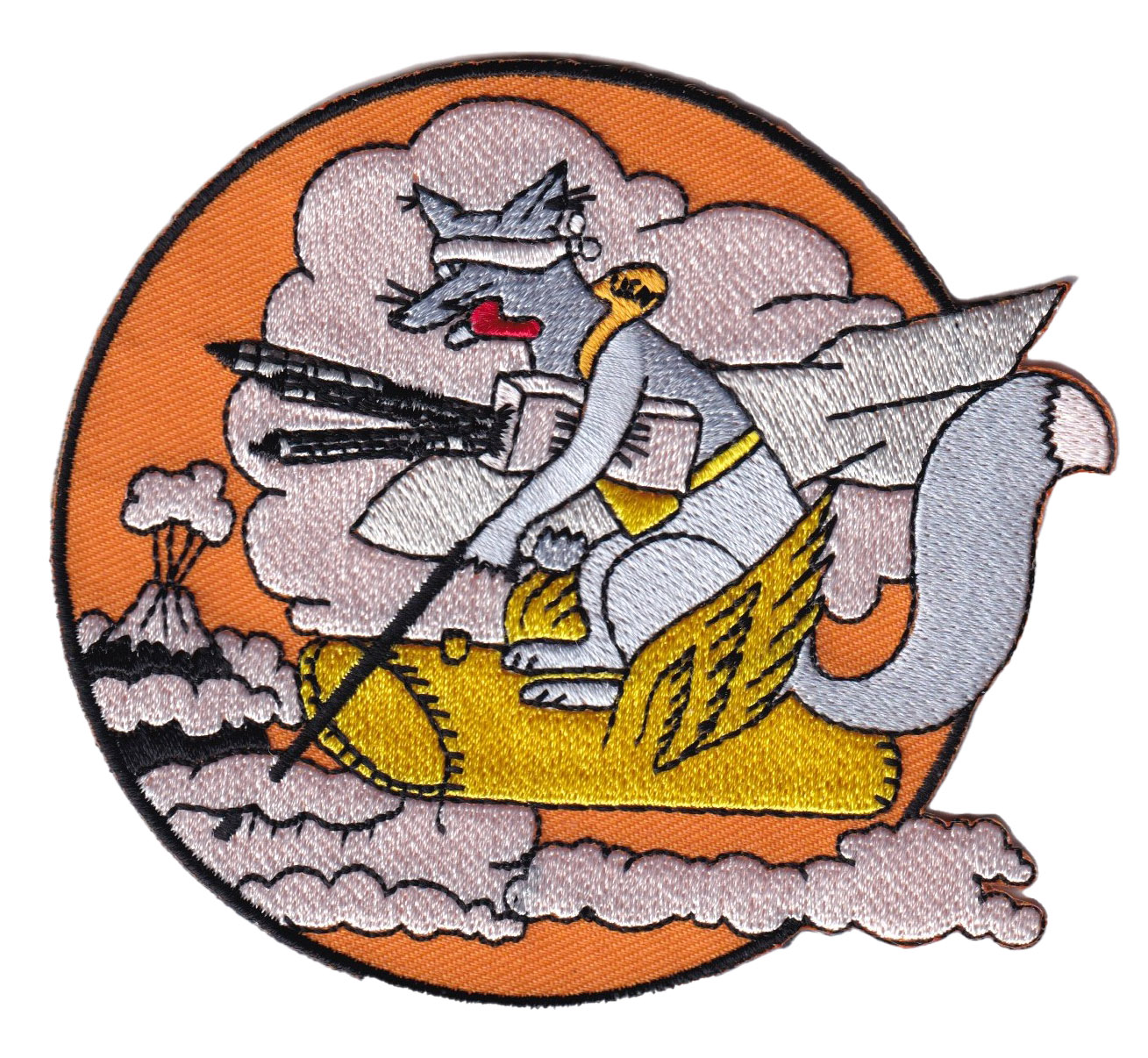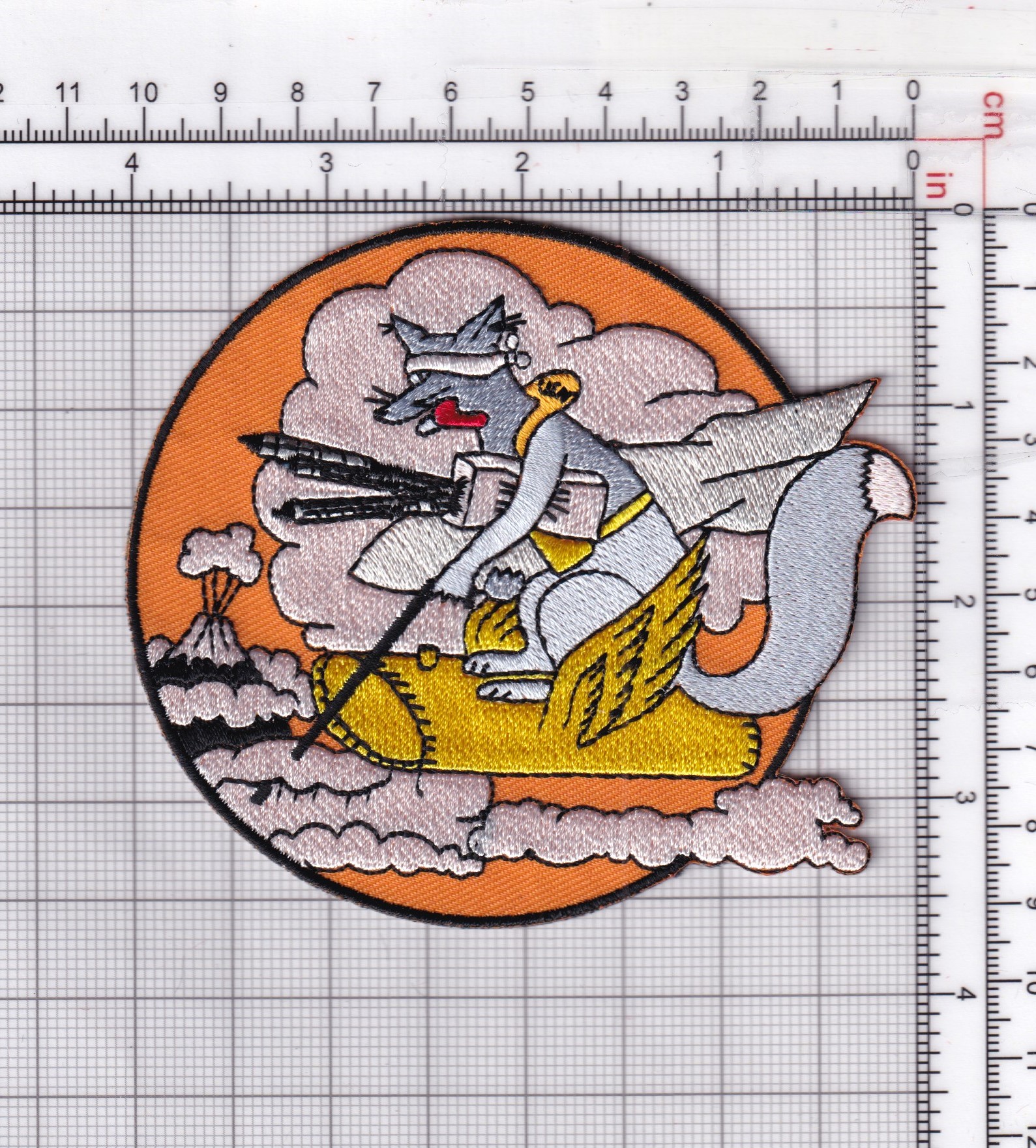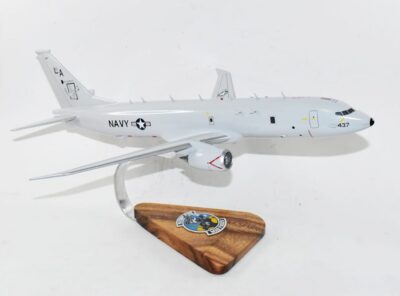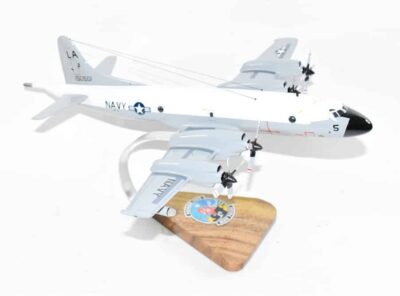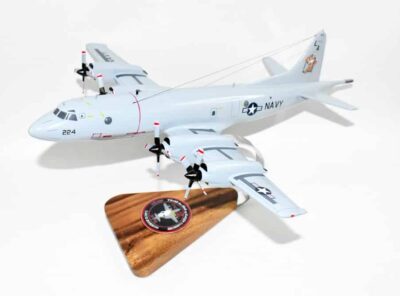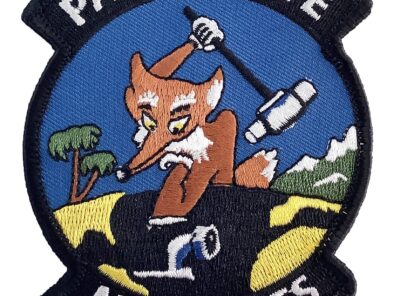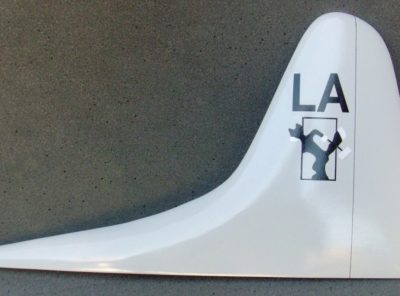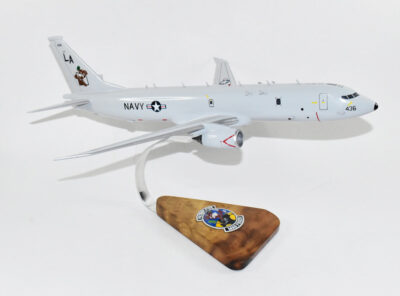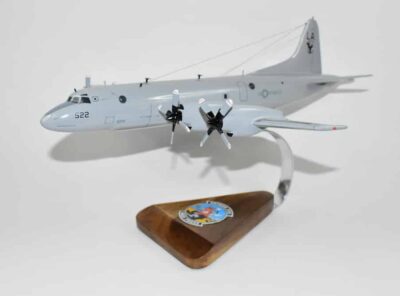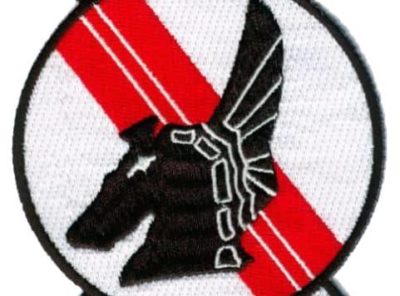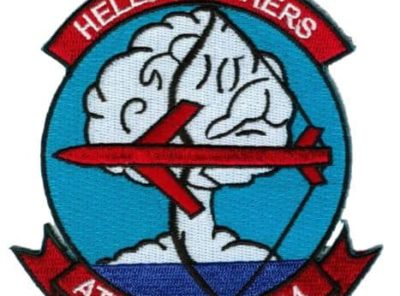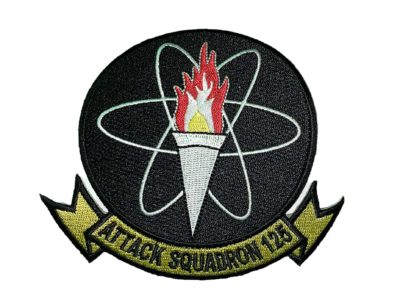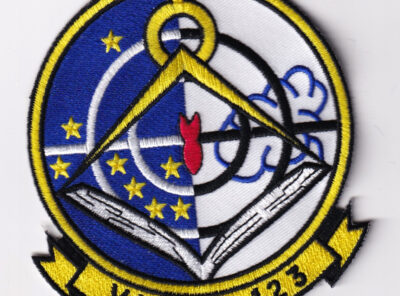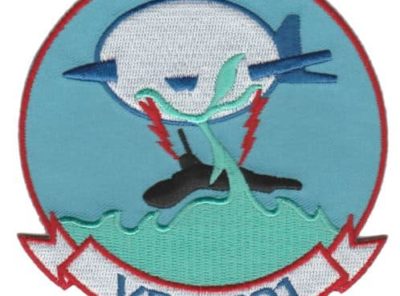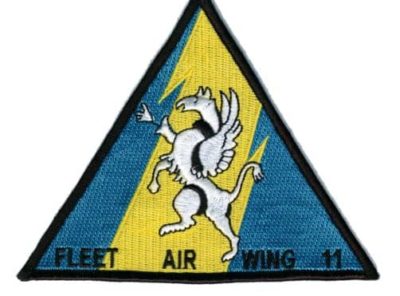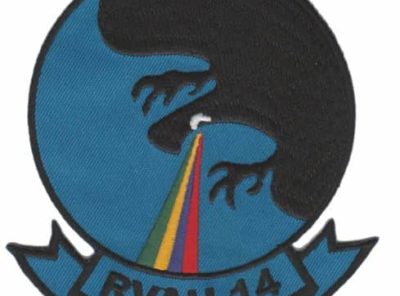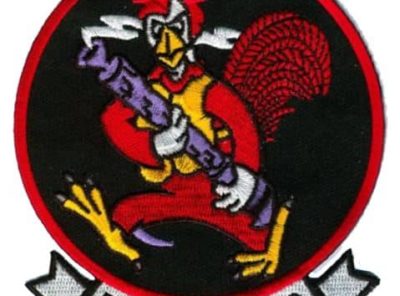Description
VP-5 Blind Fox 2nd Insignia 1944 Patch
Aviators and Collectors! Enjoy this beautifully embroidered VP-5 Blind Fox 2nd Insignia 1944 Patch. You’ll love the quality of this patch and will be able to display it proudly.
- 4 inch
- Embroidered/ Hook and Loop
- US Naval Aviator Owned Business
- Reproduction
Patrol Squadron FIVE (VP-5) is a long-lived maritime patrol squadron of the United States Navy. It is the second squadron to bear the VP-5 designation. VP-5 is the second oldest patrol squadron, the fourth oldest in the United States Navy, and the 33rd oldest squadron in the United States military. As of 2019, VP-5 is still active and is based at Naval Air Station Jacksonville, Florida.[2]
The squadron was originally established as Patrol Squadron 17-F (VP-17F) on 2 January 1937, redesignated Patrol Squadron 17 (VP-17) on 1 October 1937, redesignated Patrol Squadron 42 (VP-42) on 1 July 1939, redesignated Bombing Squadron 135 (VB-135) on 15 February 1943, redesignated Patrol Bombing Squadron 135 (VPB-135) on 1 October 1944, redesignated Patrol Squadron 135 (VP-135) on 15 May 1946, redesignated Medium Patrol Squadron (Landplane) 5 (VP-ML-5) on 15 November 1946 and redesignated Patrol Squadron 5 (VP-5) on 1 September 1948. It was the second squadron to be designated VP-5, the first VP-5 was redesignated Patrol Squadron 33 (VP-33) on 1 July 1939.[3]
1937–1941
VP-17F was established at FAB Seattle, Washington on 2 January 1937, under the administrative command of PatWing4, Base Force. The squadron’s PM-1 seaplanes were tended by USS Thrush. On 1 October 1937 VP-17F was re-designated VP-17 when all patrol squadrons were removed from the Base Force and placed administratively under Patrol Wings. During March 1938 VP-17 turned in its PM-1s in March for the new PBY-2 Catalina seaplanes. Tender support for the squadron was supplied by USS Teal. The squadron participated in Fleet Problem XIX (Phase II) as part of White Force, along with aircraft of patrol squadrons 7, 9, 11, 12, 16 and 19. Missions included flights extending out to 600 miles (970 km) to locate and successfully attack elements of Black Force. The exercises marked the first use of long-distance radio bearings for aircraft. In November 1938 VP-17 was selected to test new electrically heated flying suits, in the first trials, the suits blew out fuses while at 18,700 feet (5,700 m). The general opinion was that the suits were too bulky and unreliable in the cramped confines of the aircraft. The manufacturer began to incorporate better heating and cabin insulation in later models of the PBY, greatly improving crew comfort on long flights. On 30 January 1941 the squadron began a refit with new aircraft, turning in the older PBY-2 models for PBY-5 aircraft fresh from the factory. On 15 July 1941 VP-42 was deployed to Sitka, Alaska, for advanced base operations and cold weather training. A detachment was maintained at Naval Air Station Kodiak, Alaska. On 2 September 1941, the Kodiak detachment was visited by two aircraft from a Russian seaplane squadron under the command of General Gromof.
World War II
On 7 December 1941 upon receiving word of the Attack on Pearl Harbor, all squadron aircraft were put on alert and prepared for a move to Naval Air Station Tongue Point. The movement of the squadron to the temporary location took place on 8 December 1941, and remained in effect until the next week. On 29 January 1942 VP-42 flew all of its PBY-5s to Naval Air Station San Diego, California, where they were turned in for new PBY-5A amphibious models. Squadron strength was increased to 12 aircraft.
On 1 February 1942 VP-42 relieved VP-41 of patrol duties at Naval Air Station Kodiak. Beginning 1 March 1942, aircraft were sent in elements of two to Naval Air Station Alameda, California, for installation of ASD-1 radar. From 3–15 June 1942 VP-42 participated in the first attack on Japanese vessels and positions while based at Naval Air Facility Dutch Harbor, in the Aleutian Islands. Lieutenant (junior grade) Lucius D. Campbell flew through a snow squall to make contact with a heavy enemy concentration south of Umnak Island. Despite severe damage from enemy aircraft, he remained in the area until he had determined the extent of the enemy forces and their location. On his return to Dutch Harbor his Catalina ran out of fuel and he was forced to make an open sea landing. They survived the forced landing and were rescued later in the day. On 11 June 1942, Commander Patrol Wing 4 received a message from Commander in Chief Pacific which said, “bomb the enemy out of Kiska.” Following unsuccessful missions by United States Army Air Forces (USAAF) B-17s and B-24s, aircraft available from VPs 41, 42, 43 and 51 commenced continuous bombing missions against targets in Kiska harbor from 11 to 13 June. These missions became known as the “Kiska Blitz.” During these bombing strikes the aircraft were serviced by USS Gillis at Nazan Bay, Atka Island. Efforts to use the PBYs as horizontal bombers dropping their bombs from above the clouds proved futile. Pilots began attacking singly, approaching from a direction that provided the best cloud cover. When they were over the harbor the Catalinas were put into a dive and bombs released at the appropriate time. The flak was intense. A pullout was initiated at between 500-foot (150 m) and 1,500-foot (460 m), and the plane immediately again sought cover in the clouds. The raids continued until USS Gillis ran out of bombs and fuel. Lieutenant (junior grade) Campbell was awarded the Navy Cross for his conduct during the campaign in Alaska. On 1 July 1942 VP-42 relocated to Cold Bay, Alaska, to provide support to the FAW4 Air Search Group. On 20 July 1942, the squadron moved again to Nazan Bay, Atka Island. Tender support was provided by USS Gillis. On 3 August 1942 the squadron returned to Seattle for two weeks of leave, returning to Naval Air Station Kodiak on 22 August 1942, for a continuance of combat operations. On 23 Aug 1942 VP-42 was called upon to provide cover for the occupation of Adak. On 31 August 1942 Lieutenant S. Coleman of VP-42 heavily damaged the Japanese submarine RO-61. The submarine was caught on the surface five miles north of Cape Shaw, Atka Island. RO-61 was located later on the same day by USS Reid and sunk. Several survivors were rescued from the frigid waters.
On 15 February 1943 while stationed at Umnak, Alaska, VP-42 was redesignated VB-135. On the same date orders were received returning the squadron to Seattle, for a refit at Naval Air Station Whidbey Island, Washington, with new PV-1 Ventura medium bombers, the first to operate in the Pacific and Aleutians area. The squadron began training on 24 February 1943 after a short leave for all hands, by 23 March VB-135 was en route to Naval Air Station Adak, Alaska, with its full complement of PV-1s, arriving on 12 April 1943. Until the end of May 1943, the primary duties of the squadron consisted of photoreconnaissance and high-speed patrols over enemy held islands. Most of the photo work was done with hand-held K-20 cameras, since the aircraft had not been fitted as photorecon models. On 5 May 1943 VB-135 made its first full-scale attack on Japanese positions on Kiska, using their ASD-1 radar to penetrate the cloud cover over the target area. The squadron was based during this period at Amchitka Air Force Base. By 10 August 1943 VB-135 had moved to the Naval Air Station Attu and was given the task of providing antiaircraft patrols 500 miles (800 km) west and south of the island operating from a partially completed air strip at Alexai Point. Severe crosswinds and tent quarters made living and flying from the island a nightmare.
From 5 November until February 1944 the squadron returned to Naval Air Station Whidbey Island for leave and reassignment of personnel. Only four aircraft were able to depart Attu, the rest being unserviceable. On 3 February 1944, the squadron was reformed with new squadron personnel and aircraft. Transition training commenced for aircrews, many of whom had never flown the PV-1 Ventura. On 19 April 1944 the squadron flew to Naval Air Station Adak, where special training began on the use of LORAN for long-distance navigation in the hostile environment of the far north. LORAN was a system of electronic navigation using fixed beacons that constantly transmitted repetitive signals. An aircraft could determine its relative position between the two beacons based on the strength and direction of the signals. Each beacon had an identifying signal prefix that matched its location on the map. The HEDRON installed the new LORAN gear in the aircraft during this period and on 4 May 1944 flew to Casco Field, Attu, to resume combat operations. On 10 May 1944: VB-135 conducted night photo reconnaissance over the Japanese-held islands of Paramushir and Shimushu in the Kurile Islands. Photo flash bombs were used to light the target areas. The missions soon became known as the “Empire Express” runs, since they were the first to encroach on the Japanese home islands. This time the aircraft had been fitted with bow-mounted Fairchild K19-A cameras. On 14 June 1944 VB-135 aircraft conducted daylight photoreconnaissance over Paramushir and Shimushu, resulting in the loss of two aircraft damaged and forced to land in Russian territory. The crews were interned by the Soviets for several months. On 23 July 1944: Lieutenant Vivian attacked and sank a Japanese picket boat, but his aircraft was badly damaged by anti-aircraft fire. He and his crew were forced to land in Russian territory to face an internment of several months. On 23 October 1944 VPB-135 transferred back to Naval Air Station Whidbey Island for reforming and training of new crews. Instrument training was conducted at Naval Air Station Whidbey Island from February–June 1945.
On 1 June 1945 VPB-135 transferred to Naval Auxiliary Air Field Mount Vernon, Washington, for transition training in the new PV-2 Harpoon. The squadron eventually received 15 of the aircraft. Repairs to the wing spars of the new planes at the Burbank factory from 23 to 30 June delayed the squadron’s return to combat for its third tour. On 4 August 1945 the squadron returned to Naval Air Station Attu for another combat tour. Indoctrination training on local weather conditions was given to all new crews through 18 August 1945, when the first sector searches were initiated.[3]
The squadron was nicknamed the “Blind Fox” squadron reflecting the squadron’s method of flying “blind” through heavy weather, the squadron altered the patch to depict a fox riding a flying gas tank. In this classic patch, the blindfolded fox carried a bomb underneath one arm and with the opposite hand held a cane to assist in navigating through the clouds.
